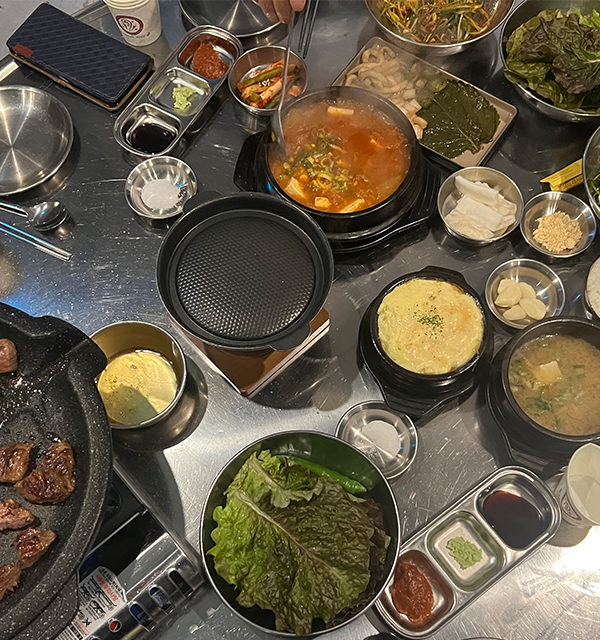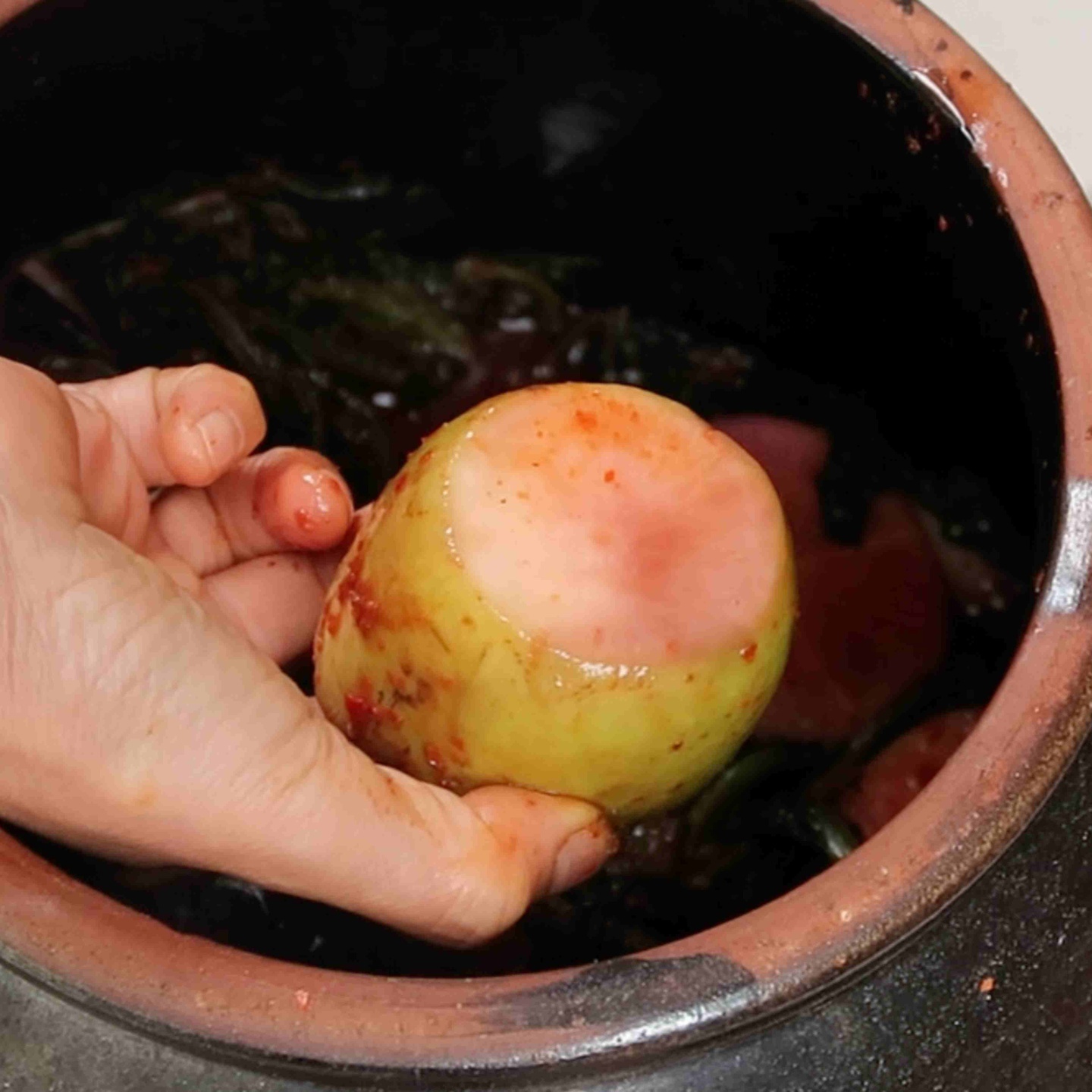Typical Layout of Korean BBQ
On your typical Korean BBQ table, you will see the following items:
- Raw protein
- Fresh Vegetables for wraps
- Dipping Sauces
- Side Dishes
- Pickled, Kimchi, Soups
Korean BBQ Wraps (쌈채소)
Usually, Korean BBQ proteins are eaten as a wrap. “Ssam chaeso” (쌈채소) is the term for vegetables that are used to wrap the ingredients that you grilled. The term “Ssam” means wrap.
There are a variety of vegetables that are used to wrap the grilled ingredients. You can mix and match to make your Korean BBQ interesting and flavorful.
- Chicory (치커리): Chicory has a bitter flavor. It is crisp and firm in texture.
- Kale (케일): Flat leaf kale is easier to use to wrap. Curly leaf kale isn’t the best substitute because the stem is super thick. Flat leaf kale is bitter and has a pungent flavor.
- Mustard greens (갓): Red mustard leaves are crisp and have a peppery, mustardy, nutty flavor.
- Lettuce (상추): Red and green leaf lettuce are one of the most common types of vegetables that are served with grilled foods. This type of lettuce is very tender, fragile, and soft. It has a fresh flavor.
- Wakame Seaweed (미역): Soaked Wakame seaweed is used to wrap as well. It comes dry and should be soaked in cold water for at least 30 minutes. It has a chewy texture and mild flavor.
- Romaine lettuce (로메인 상추): Romaine is a firm and crisp darker green lettuce. It has a sweeter flavor and is juicy.
- Korean Dandelion (민들레): Dandelion has tender leaves and an acidic mild flavor. It is better to use younger leaves because as it gets older, it gets more tough and woody.
- Pumpkin Leaves (호박잎): Pumpkin leaves can be prepped and steamed and used as a wrap. Peel the fibers from the pumpkin stem and then steam them before eating them. Use smaller, younger leaves because they have a more tender texture. Pumpkin leaves have a mild flavor.
- Water dropwort (미나리): Water dropwort can be added to the wrap to add more flavor. It has a slight celery flavor.
- Endive (꽃상추): There are two kinds of endives that you can use as a wrap. Both endive varieties are bitter. Curled endive offers a different plush texture to your wrap. Belgian endive is waxier in texture as well as bitter.
- Dried Seasoned Seaweed Sheets (맛김): Dried seaweed sheets are seasoned, pressed, and dried seaweed. It has a delicate texture and is fragile. The pre-seasoning makes it easy to pair with various grilled slices of meat.
- Perilla leaves (깻잎): Perilla leaves are another type of green that you will see often paired with Korean BBQ. It is in the mint family and has a fresh, unique herby flavor.
- Chard (근대): Swiss chard (you can use green or rainbow) is a vegetable that consists of a bitter stalk (the fibers from the stalk should be removed), and the leaves are bittersweet.
- Mizuna (미즈나): Mizuna aka Japanese mustard greens, are mild with a mustard peppery flavor.
- Ramp Leaves (산마늘): Ramp leaves have a garlic flavor. You may see them pickled on the Korean BBQ table.
- Garlic (마늘): Sliced and whole garlic are added to the wrap to add a spicy, garlicky punch to your wrap. Sliced garlic would be milder while whole can be for experienced Korean BBQ wrap eaters.
- Onion (양파): Thickly sliced or large diced onion adds a fresh bite to the Korean wrap and helps to cleanse the palette as you eat by cleansing your mouth of any grease flavor. You can eat them raw or grill them, depending on the effect you want.
- Napa Cabbage (배추): Napa cabbage can be eaten raw but, when blanched, is a great addition to a wrap. It is tender but crisp and has a mild, milky flavor.
- Korean Peppers (고추): Korean peppers can be eaten along with the sauces used in the wraps. It can also be cut into thick pieces and added to the wrap. Some peppers are spicier than others, so pick based on your preference. Some examples are 오이고추 and 아삭이고추. If you can’t stand spice but like the fresh burst of pepper flavor, scoop out the seeds and discard them before eating the pepper.


